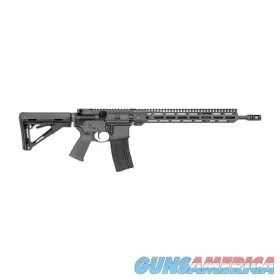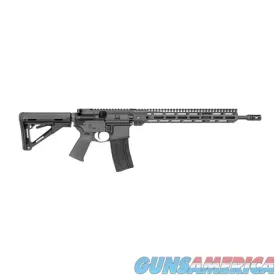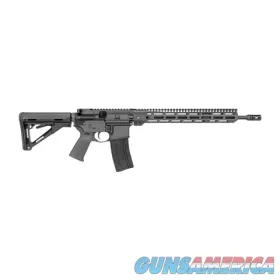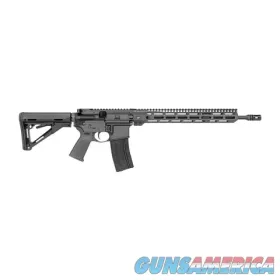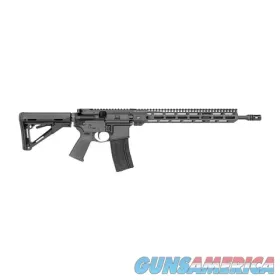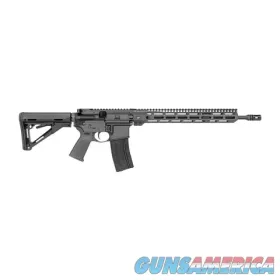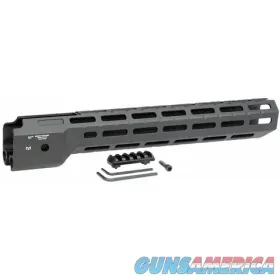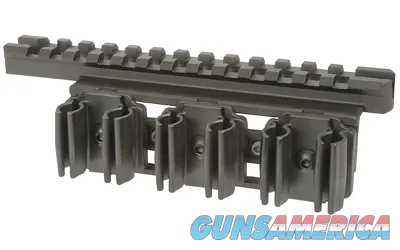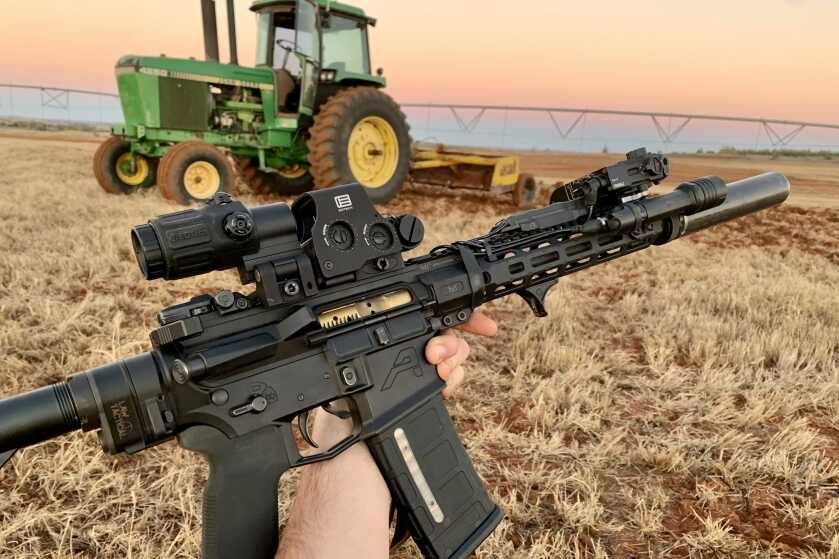
Midwest Industries has been around for a while and they have been consistently offering reliable products at a competitive price. Their 10.5” combat rail has just been another continuation of that legacy, and I have had a great experience with mine being installed on my primary AR over for over 2 and a half years.
Features:
• 4140 Heat Treated Barrel Nut
• Barrel Nut and Wrench Included
• Features Patented 4140 Heat Treated Torque Plate
• 10.50″ overall length
• 8.3 oz Installed Weight
• 6061 Aluminum Type 3 Hard Coat Anodized
• Continuous MIL-STD 1913 Picatinny Top rail
• Two Integral Anti-Rotation QD Sling Sockets
• Super Slim 1.5” Outside and 1.3” Inside Diameter
• Seven Sides of M-Lok
• 5-Slot Polymer M-Lok rail included
• Fully Dehorned and Deburred
• 100% Made in the USA – Keeps America Working
• MI Lifetime Warranty
The Combat Rail features a continuous MIL-STD 1913 Picatinny top rail, seven sides of M-Lok cutouts, and two integral anti-rotation QD sling sockets. The anti-rotation QD mounts have always held true and kept my sling locked in how I placed it. The seven-sided M-Lok cutouts give plenty of mounting options for lights and accessories that don’t need to be at the traditional 90-degree spacing common to quad rails. The rail is made from 6061 aluminum coming in at just 8.7 oz while including the barrel nut and all hardware.
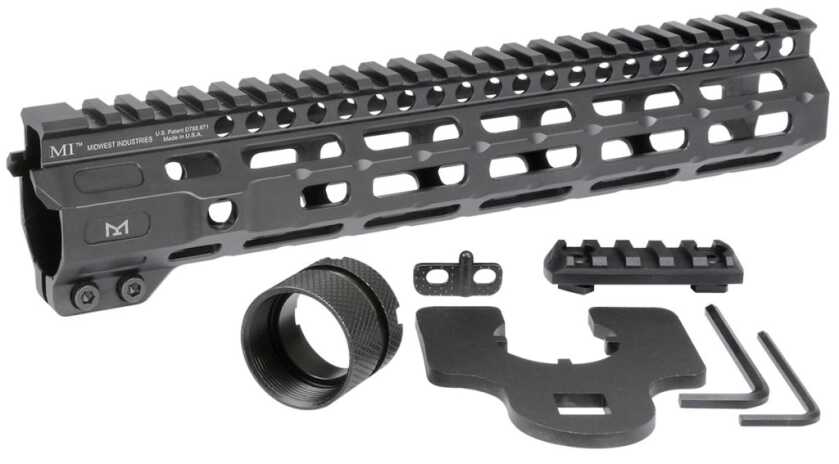
The rail alone weighs in at 6.7 ounces, not including the barrel nut hardware for fastening the rail to the upper receiver.
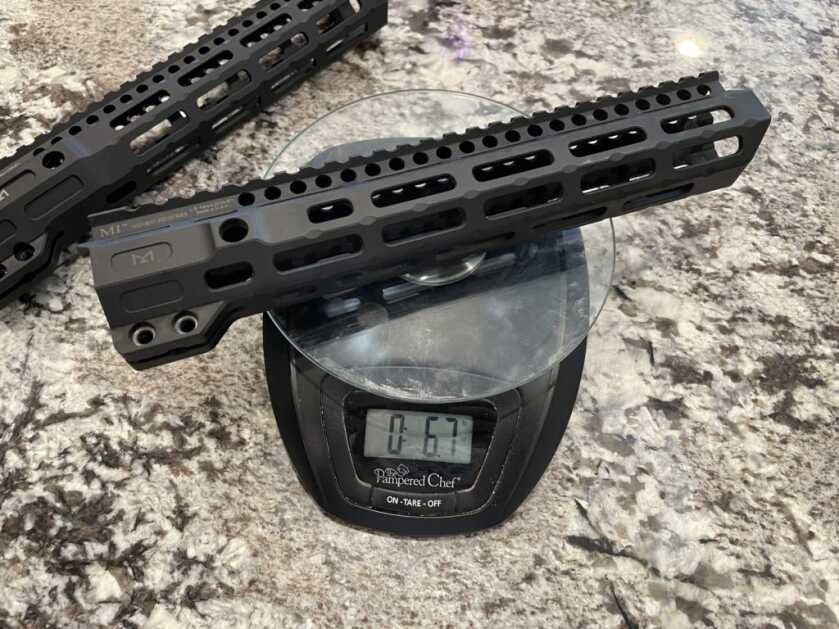
The top of the rail uses T-marks on every other space of the Picatinny sections. While I just use a pencil to mark my optics and lasers rail location, remembering the T-mark is still an option with the combat rail.
Installation of the rail can be viewed here: Installation of the Midwest Industries Combat Rail.
A unique feature of the Combat Rail is a 45 degree cut to the front of the rail. This allows for easier access for an adjustable gas block, slightly less weight out towards the front of your firearm, and an opportunity to get your finger closer to a hot barrel. Just be mindful of how far out you still have your support hand and you should be good to go.
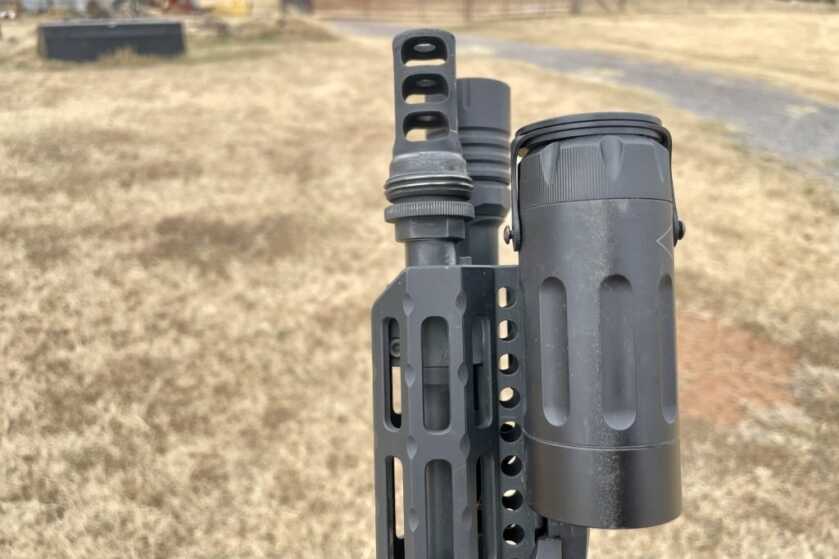
Coming in with an outer diameter of 1.5” and inner diameter of 1.3” the Midwest Industries Combat Rail is slim and rigid. I prefer slim rails, and this fits my hands well. While slim rails get harder to handle after mag dumps due to decreased distance to a very hot barrel, I haven’t gotten the rail too hot to handle yet. However, I am not one to successively burn through mag after mag.
This rail has held up to all the things I’ve thrown at it over the years, and it has also done a fairly good job at retaining my lasers zero. My noticeable point of impact shift has been minimal. While I can see my laser diverging from my scope when I purposefully push hard on the end of the rail, it has returned back to the zero I originally set. This is something that should be noted for any night vision users though. Resting the rail on barricades, trees, or whatever will have a POI shift of your laser, but if you are not leaning hard into the rifle it will be minimized, and I have never had trouble shooting out to over 100 yards using only the IR laser.
I worked on a test to figure out how much bend the rail had which would affect a lasers zero, so I hung a 10lb and 25lb weight 5 times from the very end of the rail. 25lb-force is way more than y’all should ever have to rest on your rail when firing, but I wanted to over-exaggerate the problem to get more scaleable results. My test was as follows: measuring my original lasers zero in relation to my optics zero, adding 10lbs to the end of the rail and measuring the deflection, adding 25lbs and measuring the deflection, measuring the zero of the laser with no weight to observe any shift, and then repeating the process 5 times. I found that over the first 3 intervals my lasers zero continually shifted down to a total of 0.5 inches at 40ft or the equivalent of a 3.6 MOA shift. After the first three trials, my shifted zero stayed the same after adding and removing the weights. This makes me think that it may be best to bend the rail upwards as you would do resting it on a barricade multiple times after installing the rail before originally zeroing the laser and this should help it hold true. The weights I attached pulled down where all the barricade shooting I have done over the past few years would have been pushing the rail up. This may explain part of the reason my zero held with minimal POI shift until this test.

During the testing, while adding the 10 and 25-pound weights at the end of the 10.5” rail, I averaged getting .50” (3.6 MOA) of deflection at 40ft for 10 pounds, and 1.51” (10.8 MOA) of deflection with 25lbs. For those not familiar with bending moments, the location the weight is applied makes a huge difference in how much flex a beam or rail will have. To give a fair comparison between different rails, the weight would need to be placed at the exact same location or accounted for with statics equations. Also, for help mitigating POI shift when shooting, the closer to the magwell you rest your handguard on, the less it will flex.
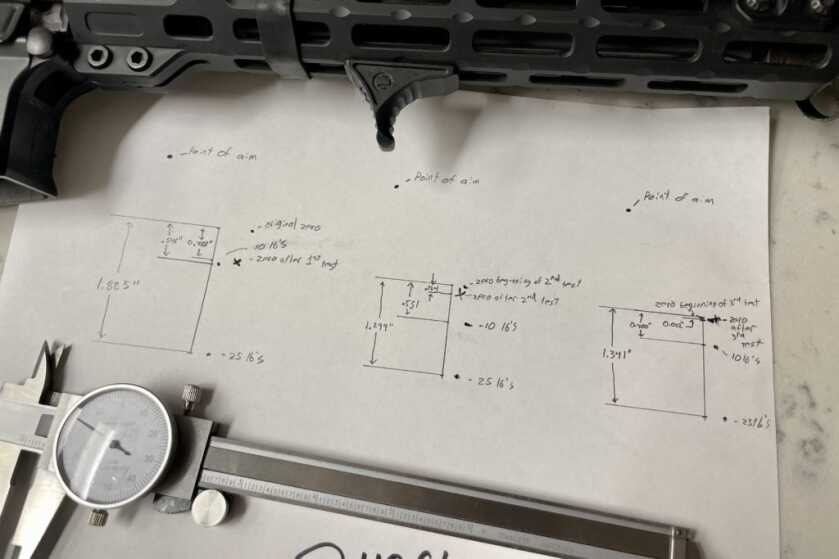
Aesthetically, the Combat Rail looks great. From the clean type 3 anodized coating to the slim M-Lok body featuring grooves at each M-Lok intersection, I am a fan.
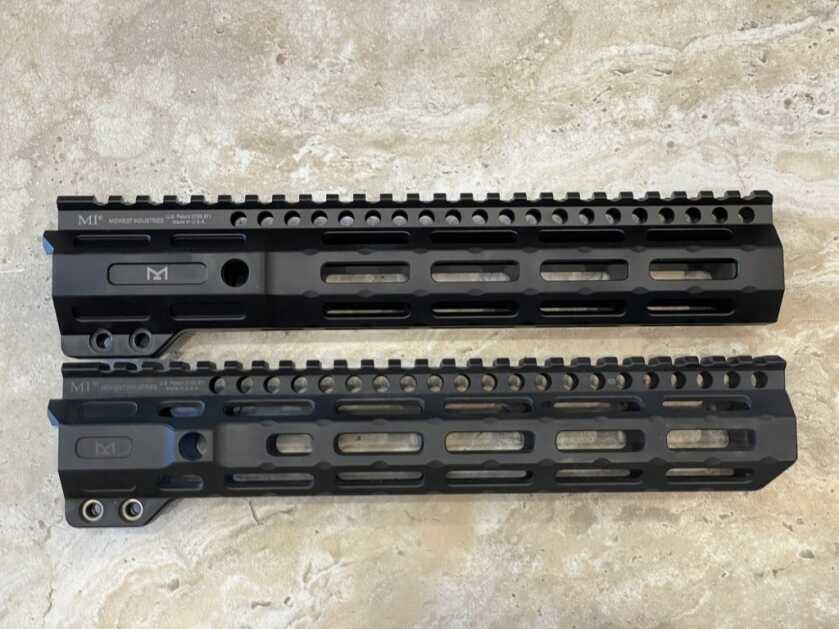
Overall and especially for the price I have been very happy with the Midwest Industries Combat Rail. It has been reliable, affordable, lightweight, and looks great. Even though there can be some bend in the rail that can affect a lasers zero when pressing hard into a barricade, it held up for me great after years of use. Currently, the 10.5” combat rail has an MSRP of $169.95 and you can find more information or purchase it on Midwest Industries website here.
Midwest Industries also provides the Combat Rail with all of the following lengths and installed weights which include the barrel nut and hardware:
4.5” 5.3 oz
6” 6.2 oz
7″ 6.8 oz
8” 7.3 oz
9.25” 8 oz
9.5” 8.3 oz
10.5” 8.7 oz
11.5” 9.3 oz
12.625” 9.9 oz
13.375” 10.5 oz
14” 10.8 oz
15” 11.4 oz
17.5” 13 oz
*** Buy and Sell on GunsAmerica! ***

